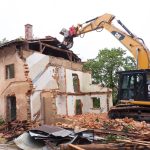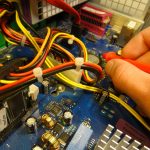Plumbing installation is a vital aspect of building construction and maintenance, encompassing the intricate network of pipes, fixtures, valves, and other components essential for the conveyance of water, gas, and waste within a structure. Whether it’s a residential home, commercial building, or industrial facility, plumbing systems play a crucial role in ensuring the distribution of clean water for consumption, the removal of waste and sewage, and the provision of gas for heating and cooking purposes.
The process of plumbing installation involves several key steps:
Design and Planning: Before any installation work begins, thorough planning and design are essential. This stage involves determining the layout of the plumbing system, including the placement of pipes, fixtures, and appliances. Factors such as building codes, water pressure, flow rates, and accessibility need to be considered to ensure efficient and compliant installations.
Material Selection: Choosing the appropriate materials is critical for the longevity and functionality of the plumbing system. Common materials used for pipes include copper, PVC (polyvinyl chloride), PEX (cross-linked polyethylene), and various types of metal. Each material has its advantages and is selected based on factors such as cost, durability, and compatibility with the intended application.
Pipe Installation: Once the design is finalized and materials are selected, the installation of pipes begins. This typically involves cutting and joining pipes to create the desired network according to the approved design. Techniques such as soldering, solvent welding, and compression fittings are used to securely connect pipes and fittings.
Fixture and Appliance Installation: Fixtures such as sinks, toilets, showers, bathtubs, and appliances like water heaters and dishwashers are installed next. Proper alignment and sealing are crucial to prevent leaks and ensure optimal functionality. Fixtures are connected to the plumbing system using supply lines for water intake and drain lines for waste disposal.
Testing and Inspection: Once the installation is complete, the entire plumbing system undergoes rigorous testing to detect any leaks, pressure irregularities, or other issues. Local building codes often mandate inspection by authorized personnel to verify compliance with regulatory standards and ensure the safety and integrity of the system.
Finalization and Commissioning: After passing inspections and resolving any identified issues, the plumbing system is finalized and commissioned for regular use. This may involve flushing the system, adjusting water pressure, and providing instructions to the occupants on proper usage and maintenance to maximize longevity and efficiency.
Maintenance and Repairs: Regular maintenance is essential to keep the plumbing system in optimal condition and prevent costly repairs. Tasks such as inspecting for leaks, clearing clogs, and replacing worn-out components should be performed periodically by qualified professionals to ensure the continued reliability and performance of the system.
Conclusion:
Plumbing installation is a multifaceted process that requires careful planning, skilled labor, and adherence to regulatory standards to create functional, efficient, and safe plumbing systems for residential, commercial, and industrial applications. From design and material selection to installation, testing, and maintenance, each step plays a crucial role in ensuring the long-term performance and reliability of the plumbing infrastructure.










